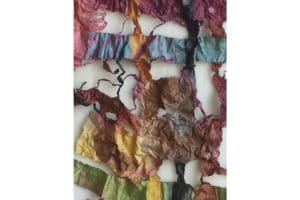Papel Amate (or amatyl) although it comes in sheets, is technically not formed the same way paper is. It is referred to as “bark cloth”, “paper cloth” and as “paper”, depending on who you talk to. The most significant fact is that the oldest codex known was made from amate in the pre-columbian era. The fibers are are scraped, cooked and beaten very much like you would to hand-make a piece of paper, even though the pulp is not poured into slurry and sheets are not pulled through a screen. Instead fibers are pounded together with a stone; creating an irregular, luscious sheet. Papel Amate has been made for centuries by the Otomí Indians in the states of Puebla and Vera Cruz in Mexico. Traditional fibers still used today are the outer bark of the ficus tree and the inner bark of the mulberry bush.
ADVENTURES IN PAPERMAKING guest blog by Heather Matthew. Heather is a paper artist living in New South Wales, Australia. A longer version of Heather’s blog was first re-posted on the PaperSlurry blog.
A hot afternoon in the clear mountains of central Mexico. I was off to visit the home studio of amate paper artist Julio Chichicaxtle on an investigation into traditional Mayan papermaking techniques. I had read about amate paper, the bark paper on which the Mayan codices was written and encountered Julio at the Feria Maestros del Arte in November 2011.
At his invitation, my husband and I were to visit his studio before the cold mountain mists rolled in and he stopped paper production until spring. After a series of memorable bus journeys from Mexico City to Tulancingo, and from there on a rattling old locale bus…we arrived at San Pablito via taxi on a crowded market morning. The taxi dropped us off with our backpacks to walk the length of the crowd selling vegetables and clothes. No one spoke English, and we didn’t know Spanish (let alone the local dialect) but were confident we would find the big yellow house where our host Julio lived.
After a ride in a policeman’s car up a hill to a tourist paper and jewelry shop, then a walk down to a small gallery, it was Julio’s father-in law who eventually led the way to Julio’s flat roofed house. He had been waiting for us, and while tortillas were cooking on the traditional oven, he led us upstairs to his papel amate studio, the rooftop terrace where he pounds and weaves bark fibre to make his extraordinary paper paintings.
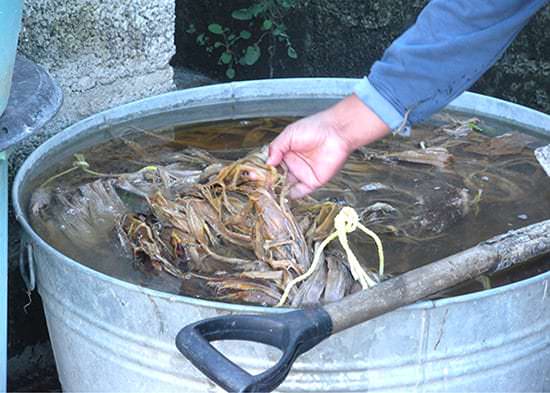
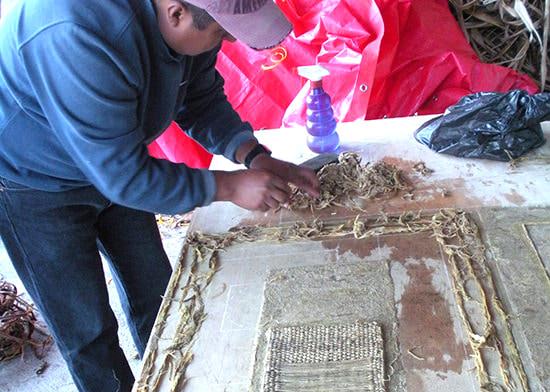
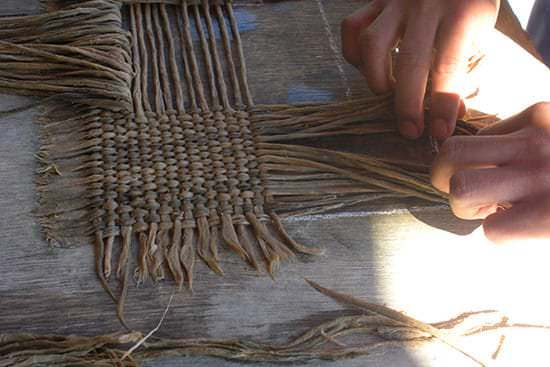
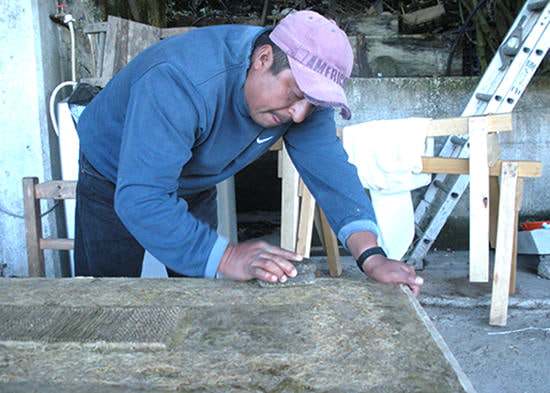
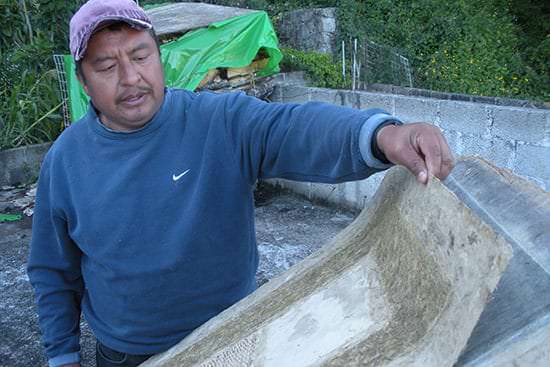

All photos provided by papermaker Heather Matthew.
Neutral colors of 3 styles of Amate now stocked at Paper Connection. Liso (plain), perferado (grid), and circular (overlapping circles). Please email us for more details: contactus@paperconnection.com

